Books by Florian Tereygeol
Journal of archaeological Science: Reports , 2020

Studies in Experimental Archaeometallurgy: Methodological Approaches from Non-Ferrous Metallurgies Georges Verly, Frederik W. Rademakers and Florian Téreygeol (eds), 2019
This volume brings together a range of methodological approaches to the study of ancient metallur... more This volume brings together a range of methodological approaches to the study of ancient metallurgy, all of which draw on experimental archaeology to an important degree. The integration of archaeological excavation, archaeometry and experimental archaeology in a holistic research framework for archaeometallurgy is thus developed from different perspectives to illustrate its potential as a research tool in ancient technology studies.We hope that this volume, through its mixture of more theoretical discussion as well as specific case studies, can inspire readers with a wide variety of backgrounds and interests. In particular, we aim to convince our colleagues in ancient metallurgy studies – working in the field, lab, library and beyond – who have not yet considered experimental archaeology in their protocols, to integrate this powerful research tool in their ongoing and future work.
Sommaire
1- Méthodologie en archéologie expérimentale - Définition et protocole
2- L’archéologie expérimentale en paléométallurgie : quelques réflexions à partir de l’exemple français
3- Broyer le minerai et affiner l’argent : deux exemples d’une approche intégrée de l’expérimentation
4- De la mine au creuset : l’essai de la chalcopyrite au flux noir
5- Archaeological experimentation and thermodynamic interpretation of chloride-sulphate gold cementation based on ancient texts and evidence from sardis
6- Le dépôt du Bronze final III du « Trou des Nutons » d’Aiseau-Presles (prov. de Hainaut). Études archéologiques et echnologiques autour d’un entonnoir de coulée
7- La chaîne opératoire de la production de l’or : expérimentations autour du site de Samut (désert Oriental, Égypte)
8- The missing link between New Kingdom chisels and chisel marks: from documentation to reproduction
9- Bronze casting artefacts from the Qubbet el-Hawa – Moulds, materials, and experimental methods
10- Les creusets métallurgiques de l'antiquité tardive à Bouto : une expérimentation autour de
l'adaptation de l'objet et de son usage à la matière disponible
Veröffentlichungen aus dem Deutschen Bergbau-Museum Bochum, Nr.: 199
Lead silver mining by Florian Tereygeol
Journées archéologiques d’Ariège 2022, 2023
Following twenty or so excavation campaigns on the Castel-Minier site (Pyrénées, Ariège, France),... more Following twenty or so excavation campaigns on the Castel-Minier site (Pyrénées, Ariège, France), this is a chance to present the chronological sequence in which this deposit was exploited, from the 10th century to the end of the 16th century. This programmed archaeological operation, supported over the long term by the State and local authorities, has uncovered more than eight areas of metallurgical activity, including three hydraulic workshops. It highlighted the multiplicity of operating chains, from extraction to the production of pure metal or alloy semi-finished products, involving more than seven different types of ore.
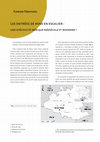
Mines et métallurgies anciennes. Mélanges en l’honneur de Béatrice Cauuet. , 2023
Les entrées de mine en escalier : une spécificité ibérique médiévale et moderne ? C'est pourquoy ... more Les entrées de mine en escalier : une spécificité ibérique médiévale et moderne ? C'est pourquoy nous les avons baptisées du nom de mines Royales, ne leur en pouvant donner autre digne d'elles. 1 Ainsi s'exprime Jean de Malus moins d'une vingtaine d'années après l'arrêt de toute activité sur le site de Castel-Minier, montrant ainsi l'importance qu'il accorde à ce lieu lors de sa recension des richesses minérales des Pyrénées en 1600. Ces mines sont effectivement exceptionnelles à plus d'un titre. Grâce au procès dont elles ont fait l'objet, une partie de leur histoire nous est parvenue 2. Exploitées pour l'argent selon les sources écrites, il s'avère que la production y est bien plus diversifiée, s'appuyant sur un panel de minerais allant de la classique galène argentifère jusqu'aux cuivres gris en passant par la bournonite et la chalcopyrite 3. Elles disposent également d'un ensemble d'ateliers établis pour le traitement des métaux non ferreux, mais aussi du fer 4. Le tout est surveillé par un castrum édifié à la fin du XIV e siècle, faisant écho aux castelli minerari italiens.
Photo Interpretation, 2006
the only production site of silver that is known to have minted deniers from the 8th century is t... more the only production site of silver that is known to have minted deniers from the 8th century is the silver-rich galena deposit at melle (deux-Sèvres, France). the site of melle constitutes an extraordinary place to study medieval mining and metallurgy. In 2009 the FAhmA project (Filière de l’Argent au haut moyen Age) funded by the French ANr (Agence Nationale de la recherche) was launched. elementary and isotopic analyses of the artefacts that result from the treatment of the ore to produce silver (ore, lead, slags and coins) will be carried out. the combination of the skills and knowledge of the researchers involved in this project is expected to contribute greatly to the understanding of early medieval silver metallurgy and could constitute a basis for future investigations of other mines.
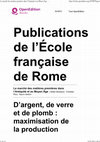
Le marché des matières premières dans l’Antiquité et au Moyen Âge., 2021
http://books.openedition.org.inshs.bib.cnrs.fr/efr/7882>. ISBN : 9782728314072
The lead-silver de... more http://books.openedition.org.inshs.bib.cnrs.fr/efr/7882>. ISBN : 9782728314072
The lead-silver deposit at Melle was opened during the sixth century AD. The exploitation took off in the second half of the seventh century to decline and die out in the tenth century. Thus, for nearly four centuries, Melle was a high place of silver production in Europe, and probably the first of the Carolingian empire. However, it is no longer possible to reduce Melle’s mining production of silver alone. The lead, an obvious by-product of the smelting of argentiferous galena, must be taken into account. More unexpected, glass is also included in this technical and economic scheme. The work undertaken on the dissemination of the mine’s products across Europe associated with the archaeological excavations at Melle highlights the productive logic of this major silver mining exploitation whose first victim was the neighbouring forest.
Der Anschnitt, Zeitschrift für Kunst und Kultur im Bergbau, 54-6, 2002
... les réponses trouvées au problème de l'approvisionnement en eau ont été similaires, ... more ... les réponses trouvées au problème de l'approvisionnement en eau ont été similaires, comme dans le cas bien connu du Laurion en Attique17. ... 45Environ un siècle après la création d'une monnaie musulmane par `Abd al-Malik, un demi-siècle après la prise de pouvoir par les ...
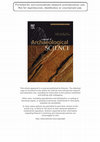
Journal of Archaeological Science, 2011
Archaeological research of the ancient Jabali silver mines (7th to 14th centuries AD) in northern... more Archaeological research of the ancient Jabali silver mines (7th to 14th centuries AD) in northern Yemen is a multidisciplinary project covering scientific disciplines traditionally related to archaeology, a geological approach and new technologies such as very high resolution remote sensing. Mining companies envisage the development of the Jabali deposit for zinc ore. Some of the planned facilities, particularly a large open pit, will have a destructive impact on the old pits and processing heaps, already damaged by recent works. In the present study, remote sensing is used for a detailed survey of the impact of preliminary mining works from the early 1980's with the aim to establish archaeological remains and to prioritize areas for future ground surveys, as well as for geological mapping. Results indicate that mapping using remote sensing in the visible to short wave infrared range has a great potential for the identification of gossans (iron caps) possibly related to archaeological remains. The phases of work in Jabali are clearly put into light by the study of a time series of Landsat data. Very high resolution QuickBird imagery appears particularly relevant for mapping most of the archaeological remnants, iron caps, as well as the 3D visualization of the mining site when drapped over a detailed digital elevation model.
Remote Sensing and Digital Image Processing, 2011
No part ofthis work may be reproduced, stored in a retrieval system, or transmitted in any form o... more No part ofthis work may be reproduced, stored in a retrieval system, or transmitted in any form or by any means, electronic, mechanical, photocopying, microfilming, recording or otherwise, without written permission from the Publisher, with the exception of any material supplied specifically for the purpose of being entered and executed on a computer system, for exclusive use by the purchaser of the work.
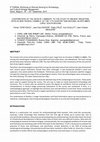
The remote silver mines of San Antonio in southern Lipez range from an elevation of 4600m to 4800... more The remote silver mines of San Antonio in southern Lipez range from an elevation of 4600m to 4800m. The mining and metallurgical complex is associated with two urban areas, now abandoned. The main mining period took place between 1640 and 1700. The main difficulties lie in the remoteness of the site and the lack of any logistic support. Therefore, the archaeological survey of the mining site and urban areas of San Antonio de Lipez that extend over several square kilometers should have been rethought. A pan-sharpened GeoEye-1 scene was captured a few weeks before the fieldwork. Preliminary work on the high resolution satellite imagery included the drawing of a map of the archaeological remains. Only two archeologists were necessary for the field checking. This latter lasted only four days. A first image processing was used to draw the detailed map of the archaeological structures. These plans were used as support during the survey. The aim was to make an initial assessment of buildin...
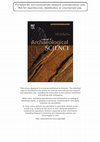
Journal of Archaeological Science, 2011
Archaeological research of the ancient Jabali silver mines (7th to 14th centuries AD) in northern... more Archaeological research of the ancient Jabali silver mines (7th to 14th centuries AD) in northern Yemen is a multidisciplinary project covering scientific disciplines traditionally related to archaeology, a geological approach and new technologies such as very high resolution remote sensing. Mining companies envisage the development of the Jabali deposit for zinc ore. Some of the planned facilities, particularly a large open pit, will have a destructive impact on the old pits and processing heaps, already damaged by recent works. In the present study, remote sensing is used for a detailed survey of the impact of preliminary mining works from the early 1980's with the aim to establish archaeological remains and to prioritize areas for future ground surveys, as well as for geological mapping. Results indicate that mapping using remote sensing in the visible to short wave infrared range has a great potential for the identification of gossans (iron caps) possibly related to archaeological remains. The phases of work in Jabali are clearly put into light by the study of a time series of Landsat data. Very high resolution QuickBird imagery appears particularly relevant for mapping most of the archaeological remnants, iron caps, as well as the 3D visualization of the mining site when drapped over a detailed digital elevation model.
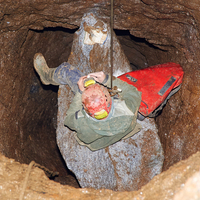
Uploads
Books by Florian Tereygeol
Rademakers (F.), Verly (G.), Téreygeol (F.), Auenmüller (J.): Guest editors
Sommaire
1- Méthodologie en archéologie expérimentale - Définition et protocole
2- L’archéologie expérimentale en paléométallurgie : quelques réflexions à partir de l’exemple français
3- Broyer le minerai et affiner l’argent : deux exemples d’une approche intégrée de l’expérimentation
4- De la mine au creuset : l’essai de la chalcopyrite au flux noir
5- Archaeological experimentation and thermodynamic interpretation of chloride-sulphate gold cementation based on ancient texts and evidence from sardis
6- Le dépôt du Bronze final III du « Trou des Nutons » d’Aiseau-Presles (prov. de Hainaut). Études archéologiques et echnologiques autour d’un entonnoir de coulée
7- La chaîne opératoire de la production de l’or : expérimentations autour du site de Samut (désert Oriental, Égypte)
8- The missing link between New Kingdom chisels and chisel marks: from documentation to reproduction
9- Bronze casting artefacts from the Qubbet el-Hawa – Moulds, materials, and experimental methods
10- Les creusets métallurgiques de l'antiquité tardive à Bouto : une expérimentation autour de
l'adaptation de l'objet et de son usage à la matière disponible
Lead silver mining by Florian Tereygeol
The lead-silver deposit at Melle was opened during the sixth century AD. The exploitation took off in the second half of the seventh century to decline and die out in the tenth century. Thus, for nearly four centuries, Melle was a high place of silver production in Europe, and probably the first of the Carolingian empire. However, it is no longer possible to reduce Melle’s mining production of silver alone. The lead, an obvious by-product of the smelting of argentiferous galena, must be taken into account. More unexpected, glass is also included in this technical and economic scheme. The work undertaken on the dissemination of the mine’s products across Europe associated with the archaeological excavations at Melle highlights the productive logic of this major silver mining exploitation whose first victim was the neighbouring forest.
Rademakers (F.), Verly (G.), Téreygeol (F.), Auenmüller (J.): Guest editors
Sommaire
1- Méthodologie en archéologie expérimentale - Définition et protocole
2- L’archéologie expérimentale en paléométallurgie : quelques réflexions à partir de l’exemple français
3- Broyer le minerai et affiner l’argent : deux exemples d’une approche intégrée de l’expérimentation
4- De la mine au creuset : l’essai de la chalcopyrite au flux noir
5- Archaeological experimentation and thermodynamic interpretation of chloride-sulphate gold cementation based on ancient texts and evidence from sardis
6- Le dépôt du Bronze final III du « Trou des Nutons » d’Aiseau-Presles (prov. de Hainaut). Études archéologiques et echnologiques autour d’un entonnoir de coulée
7- La chaîne opératoire de la production de l’or : expérimentations autour du site de Samut (désert Oriental, Égypte)
8- The missing link between New Kingdom chisels and chisel marks: from documentation to reproduction
9- Bronze casting artefacts from the Qubbet el-Hawa – Moulds, materials, and experimental methods
10- Les creusets métallurgiques de l'antiquité tardive à Bouto : une expérimentation autour de
l'adaptation de l'objet et de son usage à la matière disponible
The lead-silver deposit at Melle was opened during the sixth century AD. The exploitation took off in the second half of the seventh century to decline and die out in the tenth century. Thus, for nearly four centuries, Melle was a high place of silver production in Europe, and probably the first of the Carolingian empire. However, it is no longer possible to reduce Melle’s mining production of silver alone. The lead, an obvious by-product of the smelting of argentiferous galena, must be taken into account. More unexpected, glass is also included in this technical and economic scheme. The work undertaken on the dissemination of the mine’s products across Europe associated with the archaeological excavations at Melle highlights the productive logic of this major silver mining exploitation whose first victim was the neighbouring forest.
The full Special Issue is accessible through this link:
https://www.sciencedirect.com/journal/journal-of-archaeological-science-reports/special-issue/10F58JK2BKZ
in Verly G., Rademakers F., Téreygeol F., Auenmueller J., (guest editors), Special issue “Journal of Archaeological Science – Reports, proceeding of Experimentation and Analogy: Contributions of Experimental Archaeology to Excavations and to the Study of Materials and Equipment, Paris, 2019.
The study of the text and the technical and scientific feasibility of this mixture in the laboratory, unlikely in our modern metallurgy, were followed by experiments on the platform Archaeological of Melle. This dual approach and the establishment of a multidisciplinary team helped implement the means available in the fourteenth century to design the mold and get lead came.
Avant la mécanisation de la fabrication monétaire qui a vue l’introduction du laminoir, du coupoir et de la presse à balancier, les ouvriers monétaires ne devaient pas dépasser un certain quota de déchets lors de leur mise en forme des flans. Un raisonnement géométrique simple laisse à penser qu’un tel règlement est difficile à respecter et apparaître comme une gêne pour les ouvriers dans leur travail. D’ailleurs, l’étude d’un compte de fabrication de l’atelier monétaire de Bayonne confirme cette hypothèse. Cependant, si l’on considère un compte de fabrication de l’atelier de Crémieu, les conclusions sont différentes. C’est pourquoi l’approche expérimentale au cours de laquelle l’ensemble de la chaîne opératoire de fabrication de la monnaie a été reconstituée, a permis de mieux comprendre cette question de la production des déchets. Le propos de cet article est de démontrer que l’autorité monétaire a pu imposer un règlement qui peut en premier lieu limiter la productivité des ouvriers afin d’encourager ces derniers à mettre en œuvre une chaîne opératoire certes complexe mais qui garanti la qualité du monnayage produit.
The official history of Potosi and its 'discovery' is a tale that justifies Spanish dominion and control of the Red Mountain. In recent years, numerous works have begun to examine Potosi's past and the colonization of the region from new perspectives. These studies re-envision the connections between regional political relationships and the two historical invaders of the area, the Inka and the Spanish. Archaeological studies of sites of production have expanded our understanding of the process. This reconstruction of indigenous know-how and production techniques highlights the power struggles over control of silver production.
the existence of numerous pre-Hispanic mining
sites that were described in Spanish Colonia Era
documentary sources. Similarly, near these mines,
evidence of 11 metallurgical combustion furnaces,
mainly wayras or wayrachina, have also been
identified. Ceramic fragments from the Tiwanaku, Late
Intermediate Period styles such as Soras or Carangas,
and their late variations, as well as Inka styles, which
were found in close proximity to these structures,
also help confirm the chronology of the sites. Here,
were address the social, and technological aspects of
silver production in this mining site during pre-Hispanic
times and the first moments of the Colonial Period
incorporating this new archaeological data with the
information provided by documentary sources.
fifties, carried out a series of practical experiments which still represent a reference work. Our
global approach focuses on the different aspects of the chain of operations from the metal through
the minting of coins. 12 281 coins were struck during our two sessions, giving some new results
on the melting of blanks or on the wear of dies. The incapacity of our team to produce blanks of
a regular weight for example, ventures new hypotheses on the Greek minting process. The main
aim of these experiments was to produce a maximum of coins in order to study the dies wear due
to striking. It emerges that the production of an obverse die could be different depending on blank
size, team experience and metal used. Nevertheless, the results should set its production range
between 10 000 and 15 000 coins. Further experimentations would give us new data and the
possibility to sharpen our estimations.
https://www.editions-mergoil.com/fr/monographies-instrumentum/209-studies-in-experimental-archaeometallurgy-methodological-approaches-from-non-ferrous-metallurgies.html
Cette approche par les matières métalliques autant que par les matières minérales et organiques se veut diachronique et ouverte à différentes aires culturelles. Cette ouverture qui caractérise les travaux expérimentaux conduits sur la plateforme permet des inter comparaisons fructueuses dans une visée transdisciplinaire cultivée de longue date au sein de l’IRAMAT.
Le WS se tiendra en hybride. Il est ouvert à tous. Les personnes inscrites pour assister en distanciel recevront un lien peu avant le workshop.
La question de la matérialisation de l’immatériel et de la dématérialisation de ce qui est matériel continuera à être au cœur des interrogations et des méthodes du séminaire.
Pour la programmation 2021-2022, le thème principal du séminaire est le "Trésor"
Deuxième séance du séminaire 'Matérialité' 2021 - 2022
Ce séminaire, en partenariat avec le LAPA et avec le soutien de la Fondation des sciences du patrimoine (FSP), est proposé pour favoriser une réflexion commune au sein du laboratoire DYPAC, à propos du thème "(Im)matérialités". La deuxième session sera autour du Trésor monétaire.
le jeudi 25 novembre 2021, de 13h30 à 18h00
Programme :
Valentina Mussa, docteur en Histoire, Sorbonne Université : "Troncs à offrandes et micro-économie des sanctuaires grecs : autour de quelques exemples de thesauroi attiques"
Thibault Cardon, Chargé de recherche CNRS, Craham Centre Michel de Boüard (UMR 6273) et Vincent Geneviève, Inrap, chargé de recherche, chercheur rattaché à l'IRAMAT-CEB, UMR 5060, CNRS/Univ. Orléans: "Trésors ou dépôts monétaires ? Enjeux d'une approche scientifique"
Jérôme Jambu, MCF en Histoire moderne, Université de Lille, IRHiS - UMR CNRS 8529, expert en mobilier archéologique numismatique près le ministère de la Culture: "Ce que les trésors monétaires des époques moderne et contemporaine révèlent... et ne disent pas".
Arnaud Clairand, chercheur associé au CESCM (Poitiers) et numismate professionnel (CGB): "La législation française en matière de déclaration de dépôts monétaires : évolution, étude d'impact..."
https://www.dypac.uvsq.fr/deuxieme-seance-du-seminaire-materialite-2021-2022
The survey and the excavation, led since 2003, allow today to understand, thanks to discovery of 33 millstones, complete or fragments, how metallurgists separated waste rock to precious ore by grinding. This poster presents this work, from study of archaeological millstones to experimentation, with help of traditional and 3-D plots.
The development of freeware RTIbuilder and RTIviewer, set up by the CNR (italian national research council, see www.culturalheritageimaging.com ) for the second, led to the realization of a lighting system managed artificially. From our part, we developed a tool for shooting of reduced size items. The aim of this work was to create a system allowing easier circulation of historical and archaeological information. Thus we shall present the system worked out with the first results taking as example the following items of archaeological excavations: a medieval coin and an antique monetary mold. We shall also estimate the saving of time, the limits of the tool and propose new .